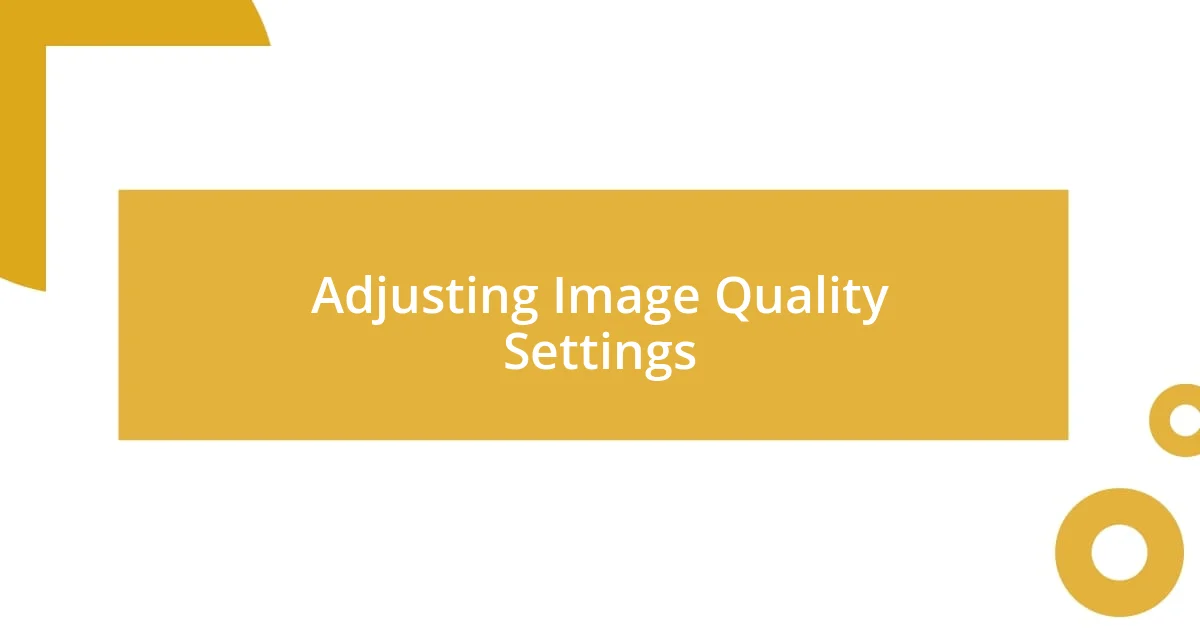Key takeaways:
- Understanding brightness (lumens), resolution, and throw distance is crucial for achieving an optimal viewing experience with a projector.
- Proper setup, including alignment and sound integration, greatly enhances the movie-watching experience.
- Regular maintenance, such as cleaning, proper storage, and timely lamp replacement, is essential for maintaining projector performance and longevity.

Understanding Projector Basics
When I first started using a projector, I was amazed at how much goes into getting that perfect image. Did you know that most projectors rely on brightness measured in lumens? The higher the lumens, the better they’ll perform in bright rooms. I remember setting mine up in a well-lit living room and feeling utterly discouraged when it washed out my favorite movie scenes.
Another essential aspect of projectors is resolution, which can drastically affect the clarity of your display. It’s like when you watch a high-definition movie after years of standard definition – there’s no going back! I still recall the first time I switched to a 4K projector; the level of detail made the characters feel so alive that I could almost reach out and touch them.
Last but not least, understanding throw distance can really enhance your viewing experience. It’s fascinating to learn how far the projector needs to be from the screen to create that ideal image size. There were moments when I positioned mine too close, and the image was a blurry mess. Have you ever struggled to find the right spot? Knowing the basics helped me avoid many frustrating evenings!

Choosing the Right Projector
Choosing the right projector can feel overwhelming, but I found that focusing on my specific needs made it easier. For instance, when I was searching for my projector, I wanted one that could handle both movies and video games seamlessly. After some trial and error, I discovered that I needed a projector with a low input lag and high refresh rate to keep up with my gaming enthusiasm without noticeable delays.
Here are some key factors to consider when choosing your projector:
– Brightness (Lumens): I learned the hard way that a projector with at least 2,000 lumens was essential for my bright home office.
– Resolution: The jump from 1080p to 4K was nothing short of a revelation; I still remember being completely captivated by the rich details on the screen.
– Throw Distance: Understanding how far my projector needed to be helped me avoid those awkward setups—no one wants a blurry image while watching their favorite films!
– Portability: One summer, I brought my projector outside for movie nights, which made me realize how much I valued lightweight options.
– Connectivity Options: Having multiple HDMI ports allowed me to easily switch between devices, which was a lifesaver when my friends wanted to connect their gaming consoles.

Setting Up Your Projector
Setting up your projector correctly is crucial for a satisfying viewing experience. I remember my first challenge was aligning the projector just right. It felt like a little dance—adjusting the angle, moving it back a couple of feet, then shifting it up again. Once I finally got the alignment correct, the sense of satisfaction was unbeatable. Trust me, taking the time to meticulously set everything up pays off in the end with crystal-clear images.
One aspect I highly recommend focusing on is the keystone correction feature. This adjustment helps make sure your picture looks straight, even if your projector isn’t perfectly level. Initially, I overlooked this setting and ended up with a trapezoidal image that made my favorite movies feel like a funhouse experience. After realizing this, I could finally appreciate the beautiful symmetry of the landscapes in the films! It’s a handy tool that can save you a lot of headaches.
Lastly, don’t underestimate the importance of sound setup. Integrating your projector with a sound system can elevate your viewing experience immensely. I still recall one movie night where I just relied on the projector’s built-in speaker—disappointment settled in when the thrilling sound effects were drowned out. When I finally connected my projector to a quality soundbar, the experience transformed into something unexpected. Suddenly, I was immersed in the film, feeling every subtle nuance. Your project setup isn’t only about the visuals; the audio plays an equally significant role!
| Aspect | My Experience |
|---|---|
| Alignment | Initially clumsy adjustments led to poor image quality |
| Keystone Correction | Overlooked it at first; realized it was crucial for a straight image |
| Sound Setup | Built-in speakers were disappointing compared to connecting a soundbar |

Adjusting Image Quality Settings
When I first dived into adjusting my projector’s image quality settings, it felt like stepping into a whole new world. I’ve always believed that brightness is a key player, and experimenting with my projector’s settings confirmed it. One evening, I decided to crank up the brightness, and I was blown away by how crisp and vibrant the colors appeared; it was like adding a new layer of depth to the movie. Have you ever felt that moment when a simple adjustment brings the visuals to life? It’s exhilarating.
Next, I turned my attention to contrast settings. I remember watching a classic film, and when I heightened the contrast, I could see the shadows and highlights dance brilliantly across the screen. It transformed the viewing experience entirely! Contrast isn’t just a technical setting; it feels personal. Each adjustment can evoke different moods and emotions. Have you ever noticed how contrast can make a thrilling chase scene even more exhilarating?
And let’s not forget about color calibration—this is where I truly had my “aha” moment. At first, I didn’t think it mattered much, but once I played with the color settings, it felt like I was finally seeing the movie the way the creators intended. I reflect on that moment—I had the saturation dialed up too high, which gave the skin tones an unnatural sheen. Adjusting it back down felt rewarding, and seeing the characters come to life in their true hues was simply magical. It’s about personalization; finding what resonates with your taste can make all the difference in your overall experience.

Calibrating Color and Brightness
Calibrating color and brightness is one of those tasks that can feel both tedious and incredibly rewarding. I still remember the first time I tried to get the colors just right. I felt like an artist, mixing paints to find the perfect hue. When I finally adjusted the saturation and found a balance that made everything pop without looking artificial, I felt a rush of satisfaction. Have you ever stood back after a long day of painting, just to admire your work? That’s precisely how it felt.
Now, let’s talk about brightness. I learned the hard way that too much brightness can wash out the details, so I started experimenting. I recall one late night, adjusting the brightness while watching a suspenseful thriller. Striking the perfect level meant the shadows were rich and inviting rather than blown out and flat. It made the haunting moments come alive; I could savor the tension in every scene. It’s fascinating how even slight tweaks can shift the entire mood of a film, don’t you think?
Lastly, I discovered the magic of color temperature. Adjusting it felt like tuning an instrument; too cool and the visuals felt sterile, too warm and it looked overly nostalgic. I clearly remember feeling like I had returned to my childhood room when I found that sweet spot of natural warmth, perfect for my favorite nostalgic movies. I learned that getting color and brightness right isn’t just about the technicalities—it’s about creating an atmosphere that resonates with your personal experiences. What about you? How do you want your viewing space to feel?

Fine-tuning Audio Settings
Fine-tuning audio settings was a game-changer for me. Initially, I cranked the volume up without considering much else, only to realize that clarity is just as crucial as loudness. I still recall a movie night where I adjusted my projector’s audio output settings. Suddenly, I could hear every whisper and rustle of leaves, creating an atmosphere that felt almost immersive. Have you ever been engrossed in a scene, only to miss crucial dialogue due to poor sound?
After getting the volume right, I focused on balancing the bass and treble. I remember testing different audio presets available on my projector. Some settings boosted the bass aggressively, making action scenes thump in my chest, which felt exhilarating! But when it came to dialogue-heavy films, I found myself straining to hear the characters talking over the booming sound. Finding that perfect equilibrium made me appreciate subtle sound design, have you noticed how an understated score can elevate the emotional weight of a scene?
Most importantly, I delved into the spatial sound settings. I experimented with stereo versus surround sound, and I vividly remember the first time I switched to surround for a concert film. The sensation of being wrapped in music was astounding; it felt like I was right there in the crowd! It struck me how audio can transform the entire movie-watching experience, adding depth that visuals alone can’t deliver. How do you approach sound in your viewing experiences? Do you prioritize immersion or clarity?

Maintaining Your Projector for Longevity
Taking care of my projector has become a ritual I genuinely enjoy. I always make it a point to give it a gentle dusting weekly to keep the lens and air vents clean. It’s surprising how much a little maintenance can significantly improve picture quality. I still remember the first time I ignored this step; the image was dull and hazy. Ever had that moment when you realize you’ve let something slip and suddenly everything changes when you correct it?
I also learned the importance of properly storing my projector when it’s not in use. As someone who tends to move things around, I made a habit of placing it in its original box, away from excessive heat or humidity. The time I left it exposed to elements led to a warning on the screen about overheating. That was my wake-up call. How often do you think about protecting your tech from environmental factors in your space?
Lastly, I’ve become quite vigilant about replacing the lamp at the recommended intervals. Ignoring it used to mean I’d be binge-watching a favorite show and suddenly experience a dimming, which was so disappointing. I’ll never forget the first time I replaced a lamp; the colors popped back to life, and I felt like I had a brand-new projector. Have you considered that regular maintenance not only extends the lifespan of your equipment but also enhances your viewing pleasure?















